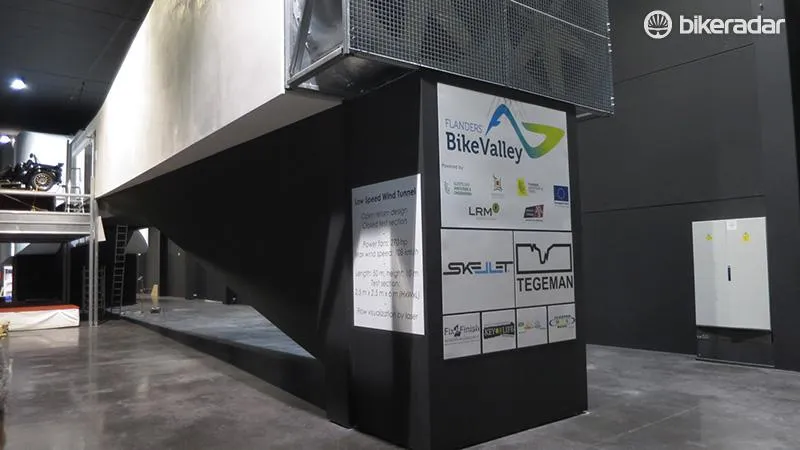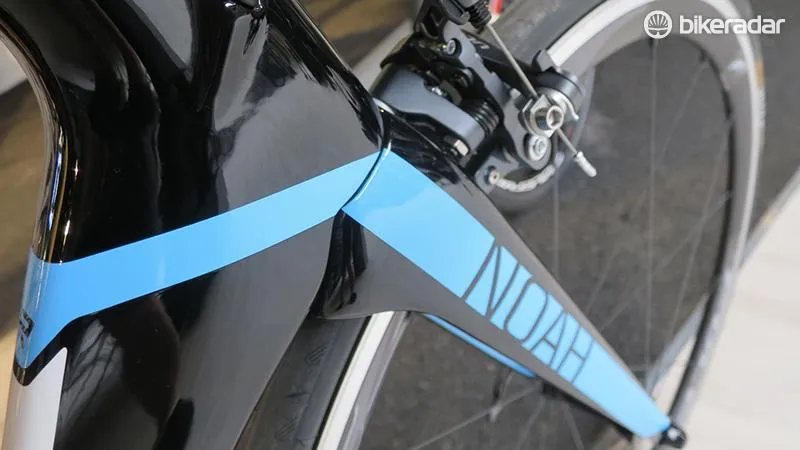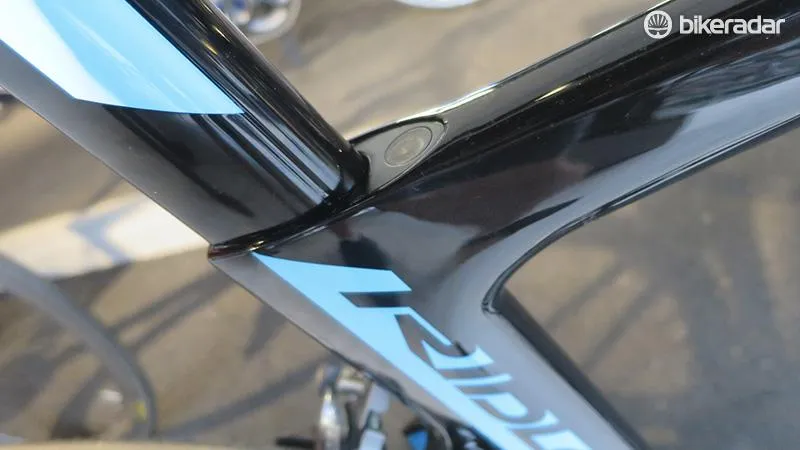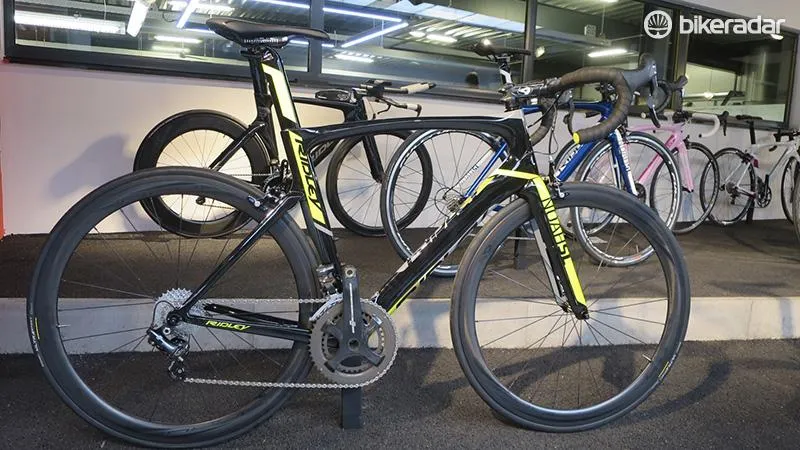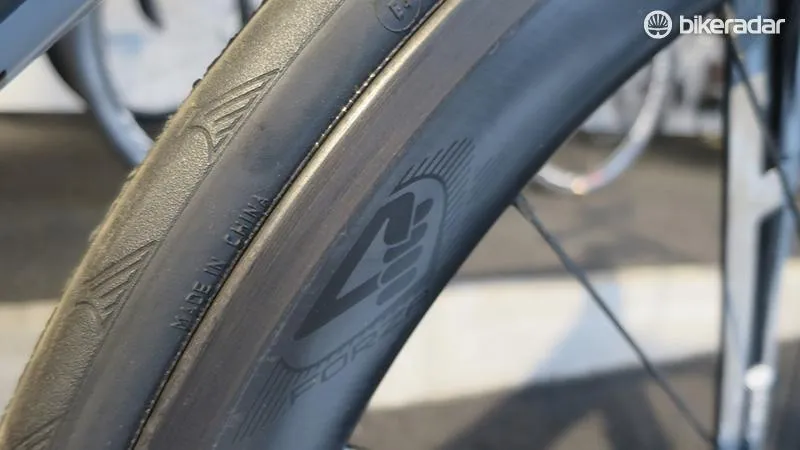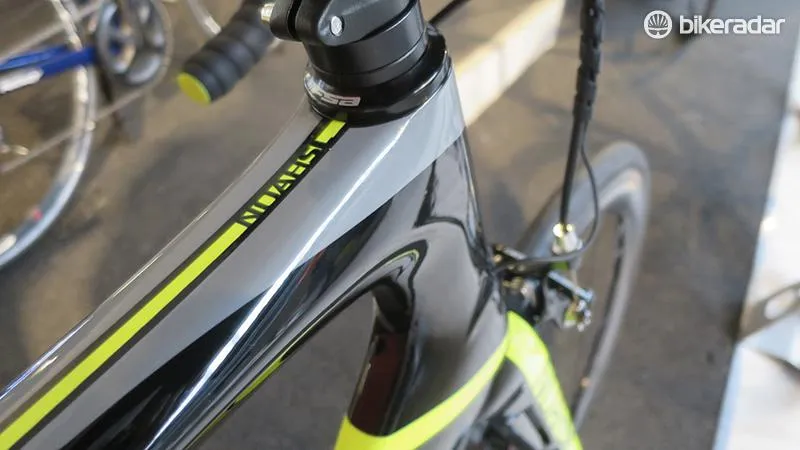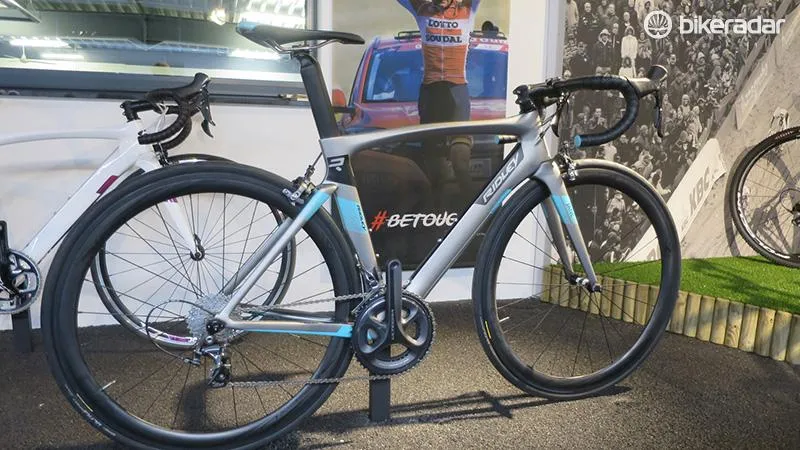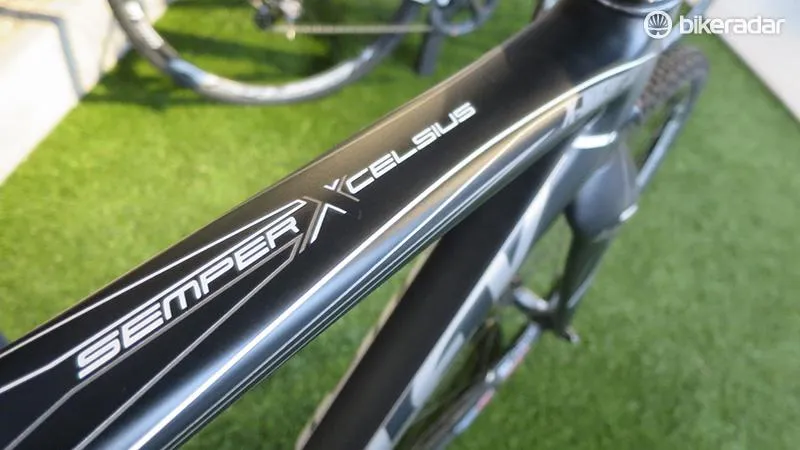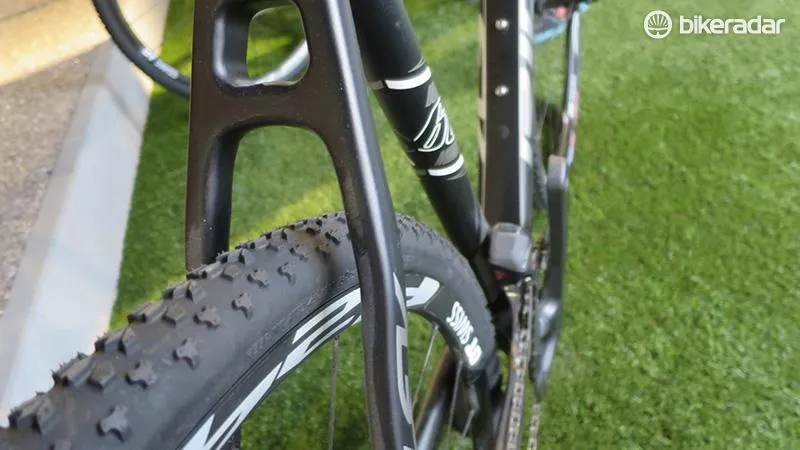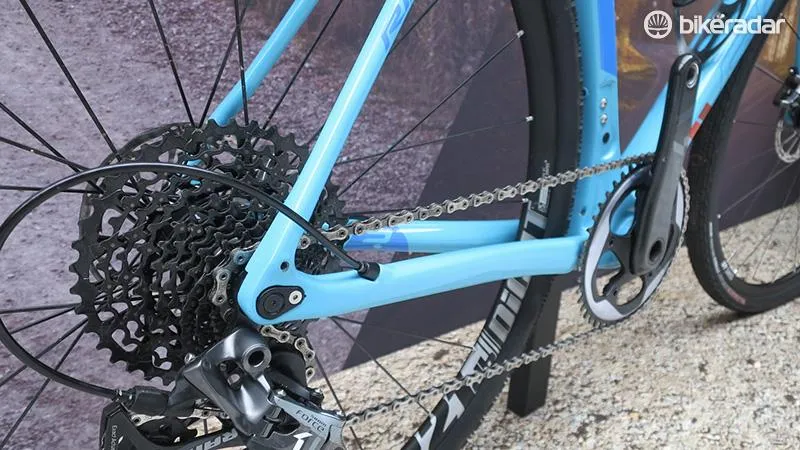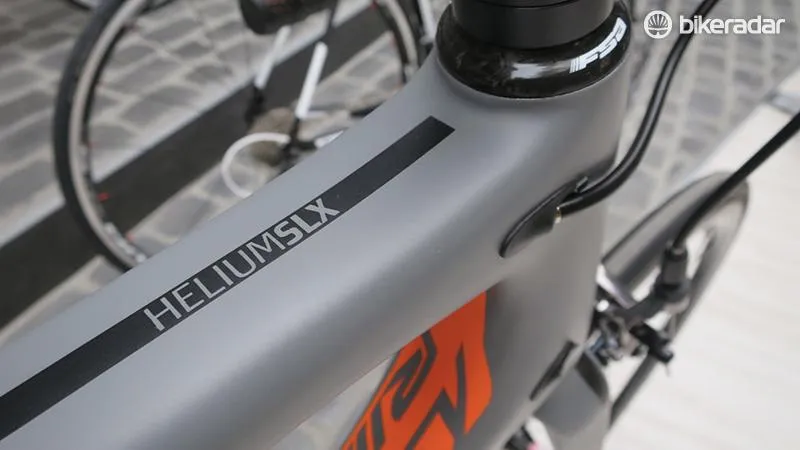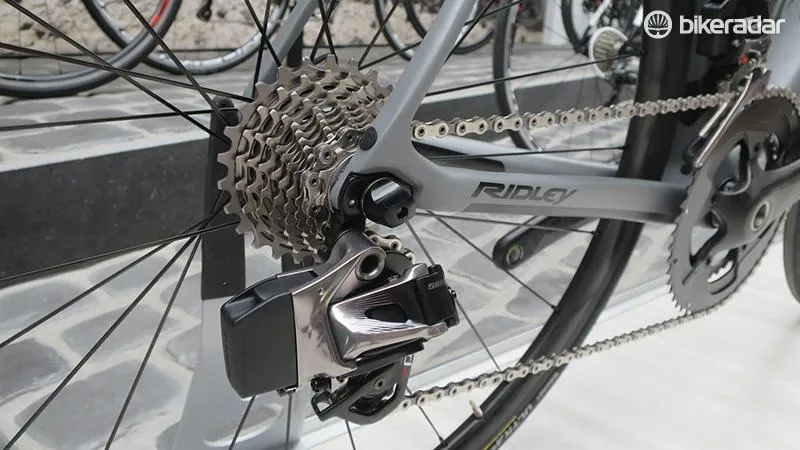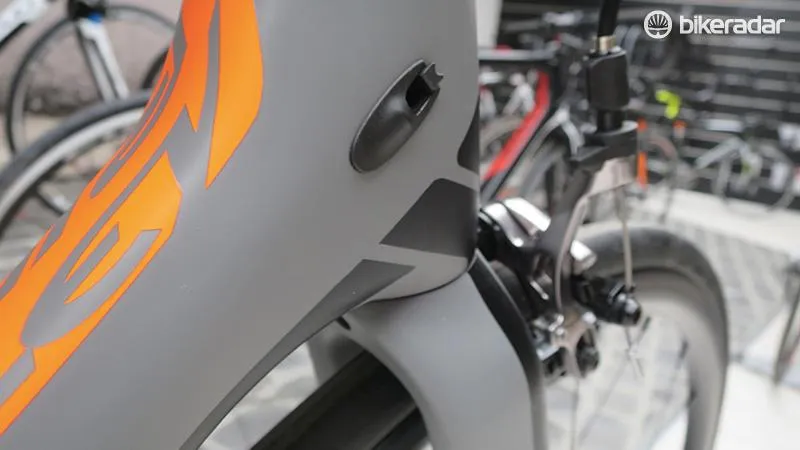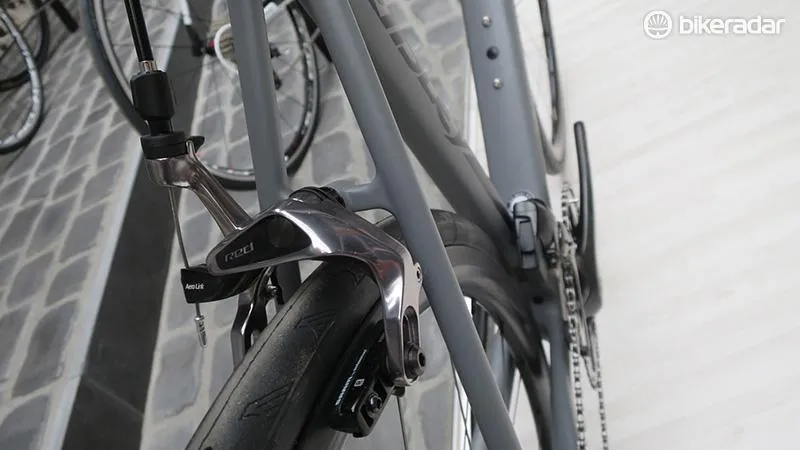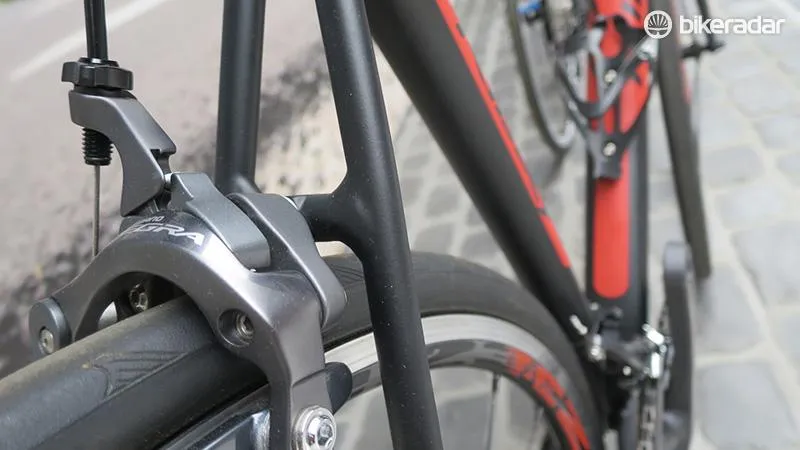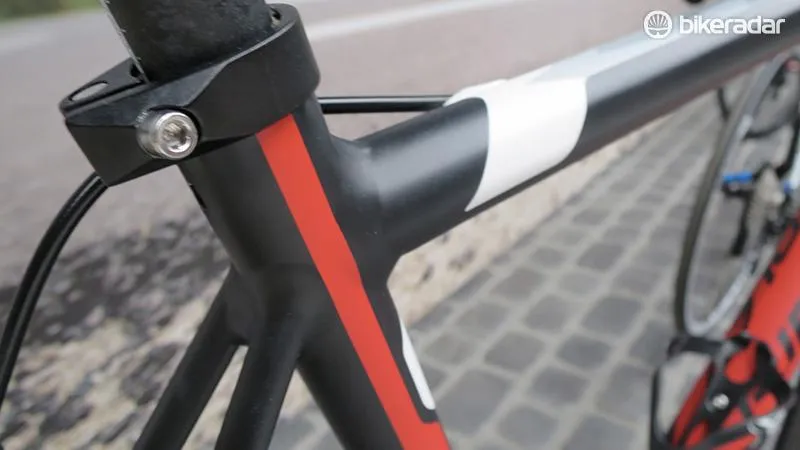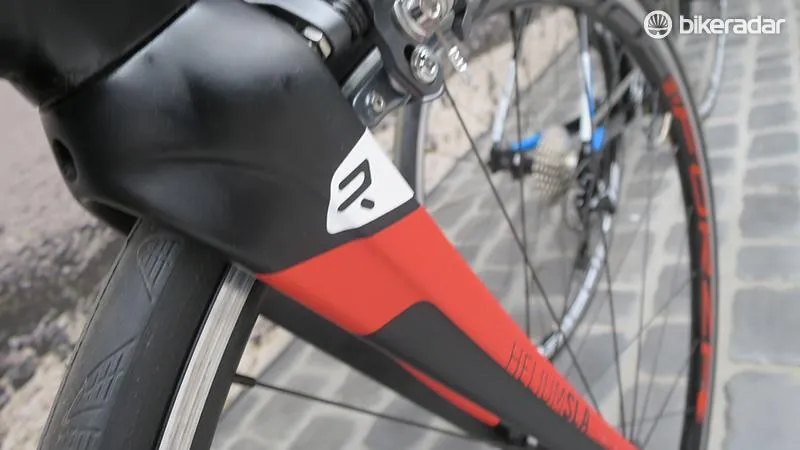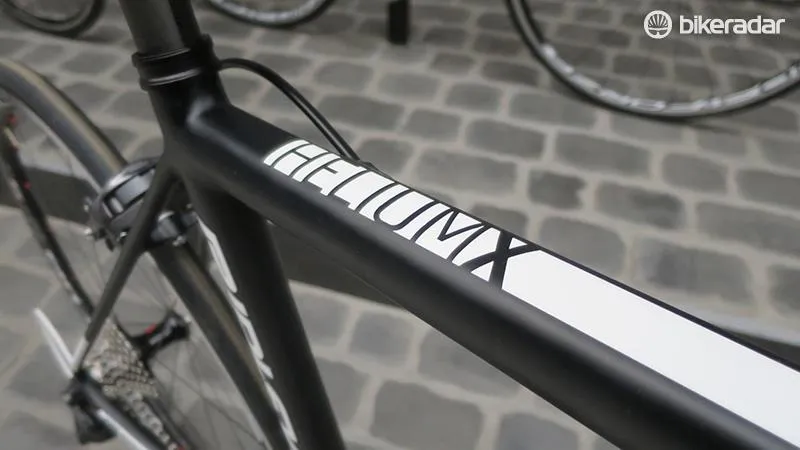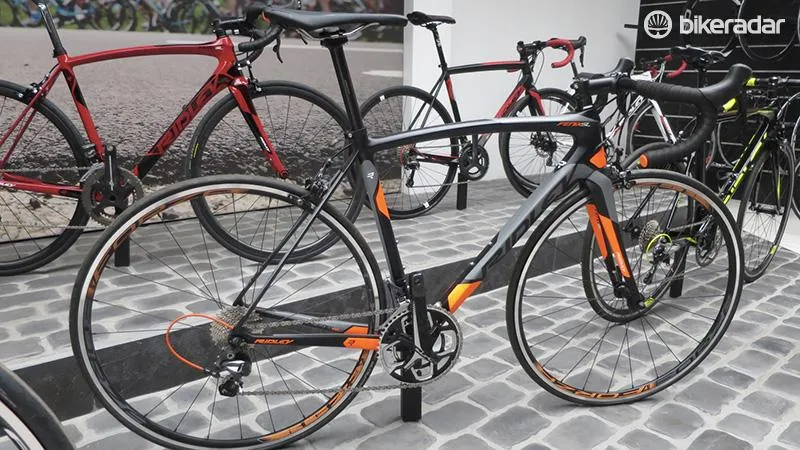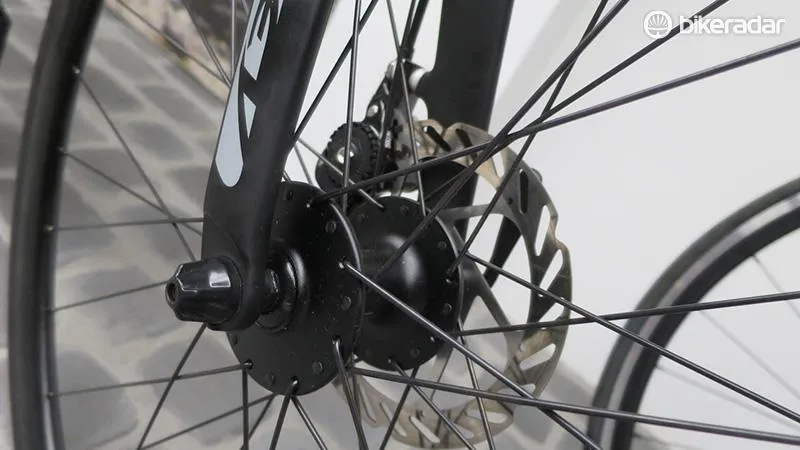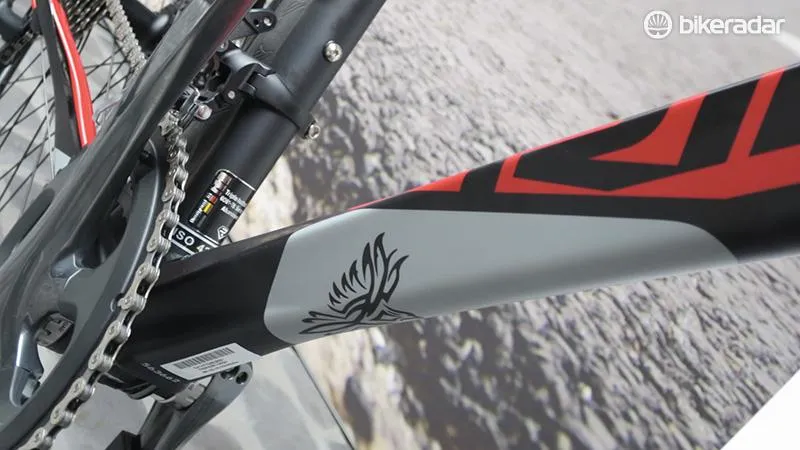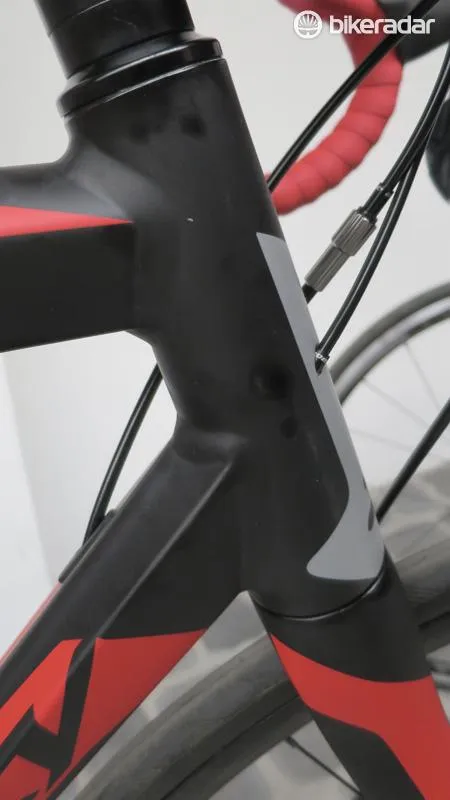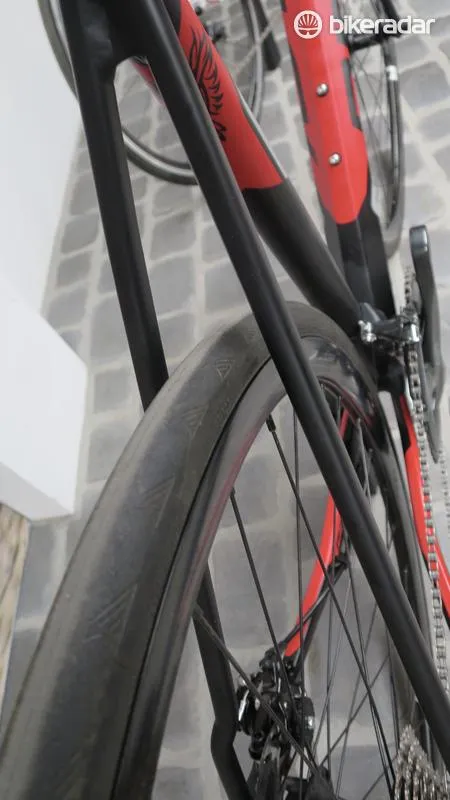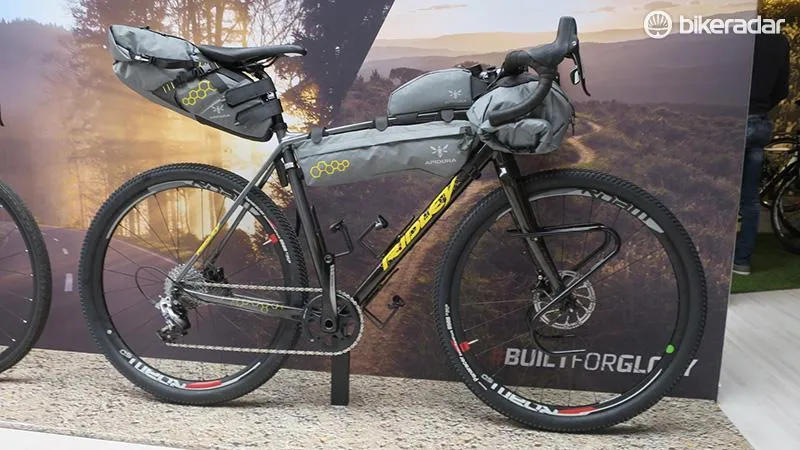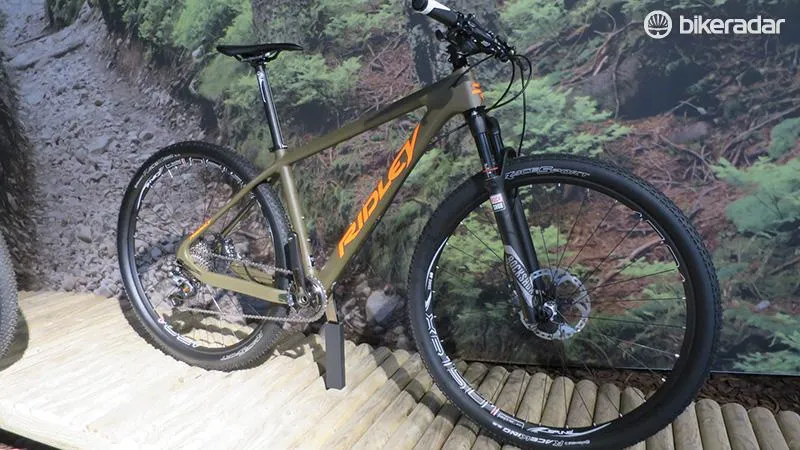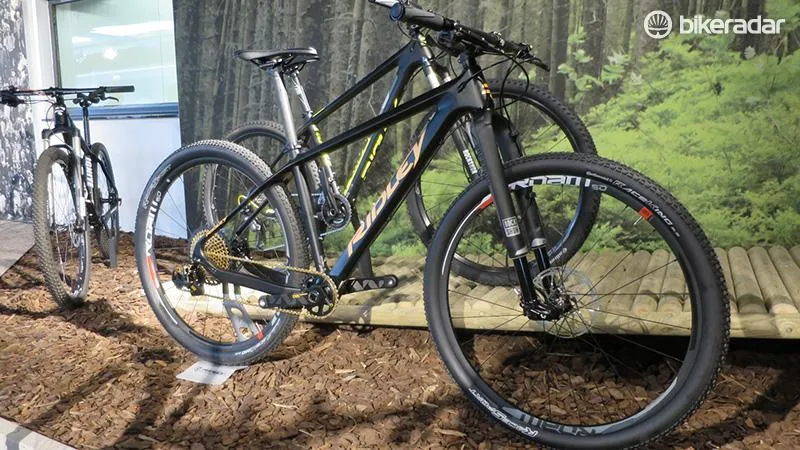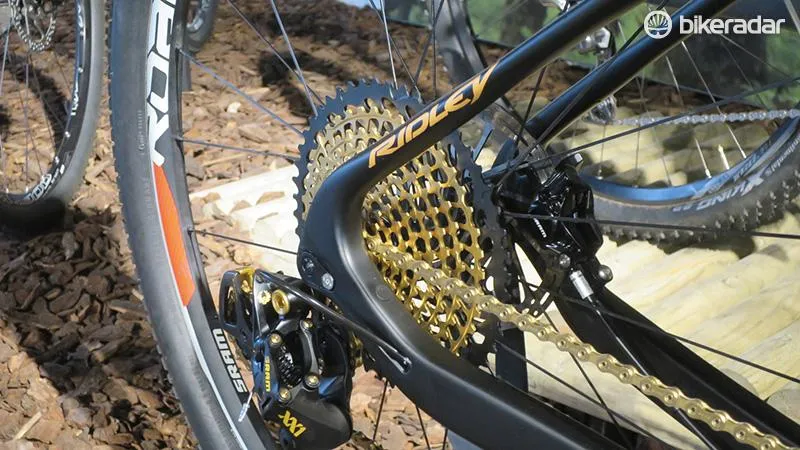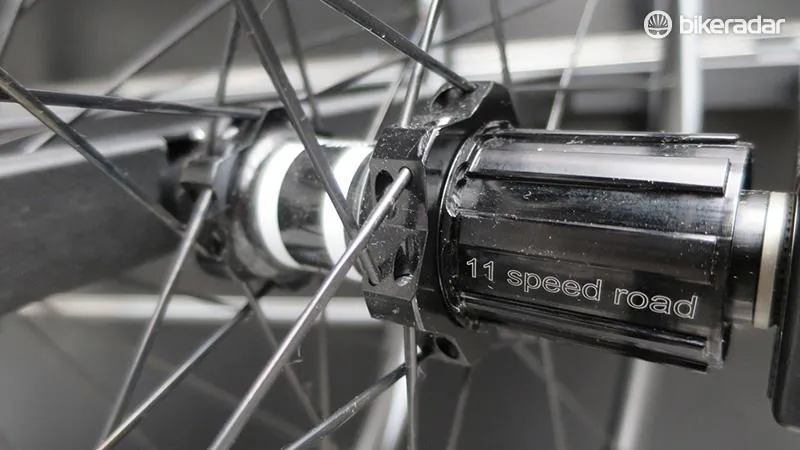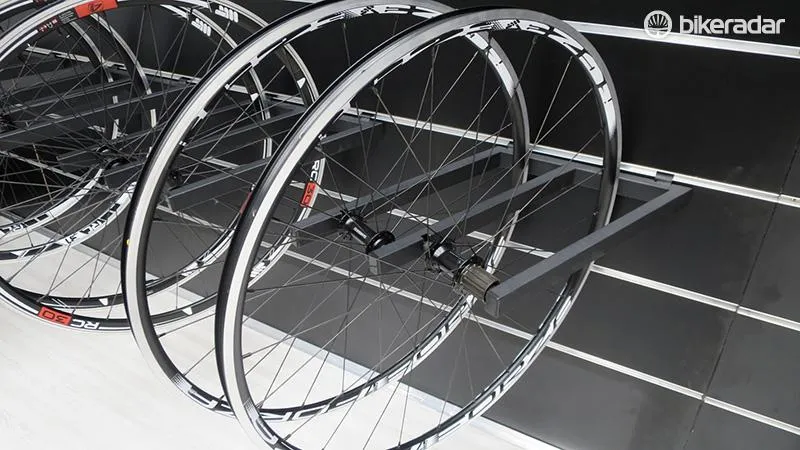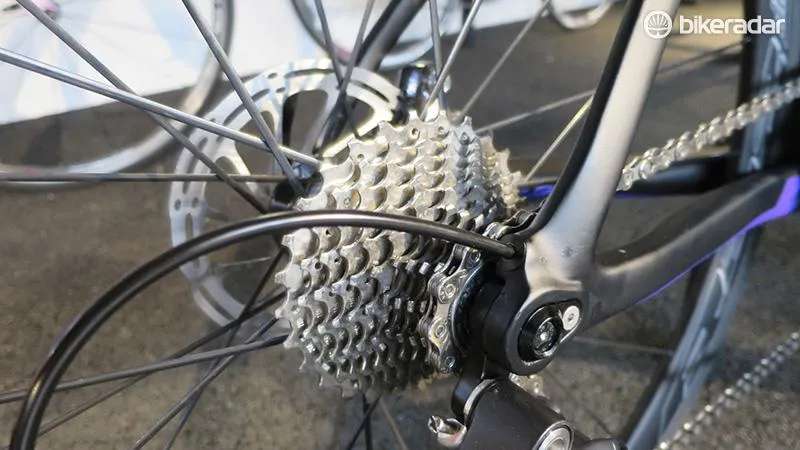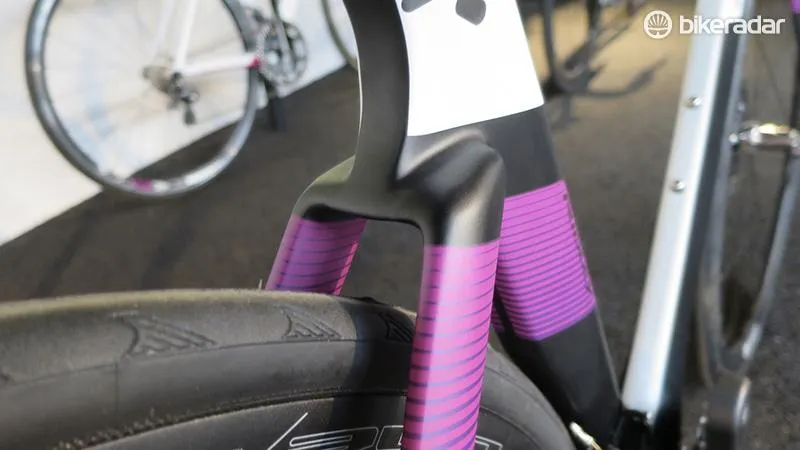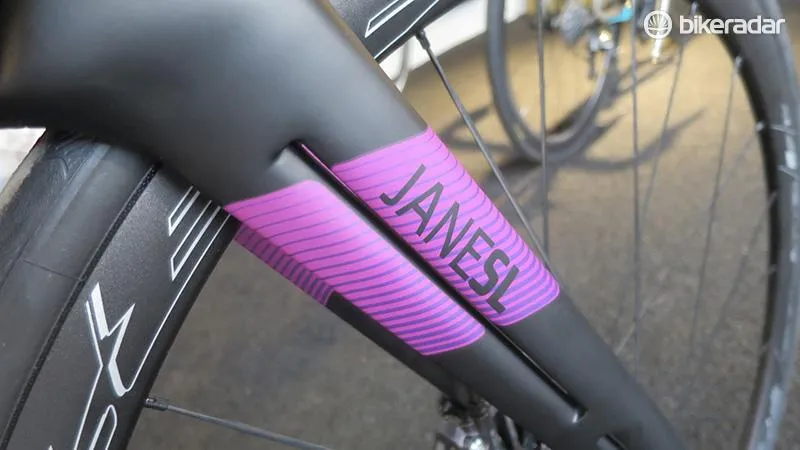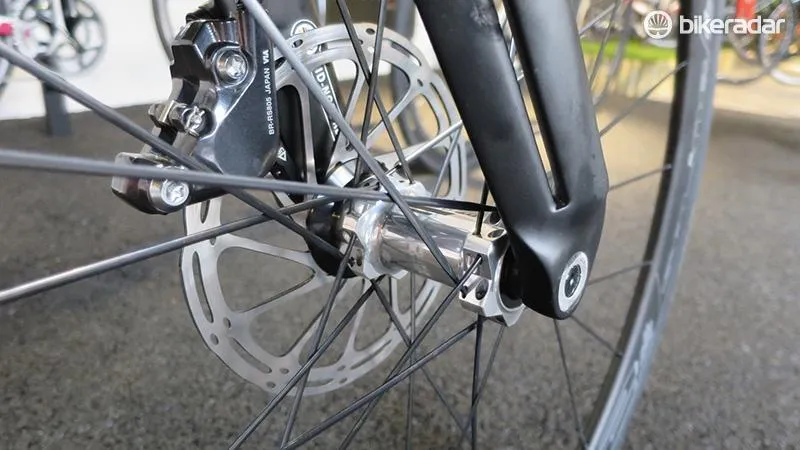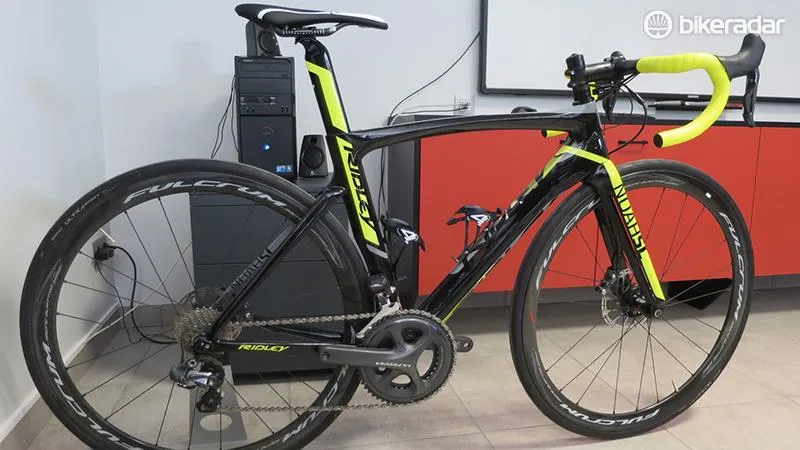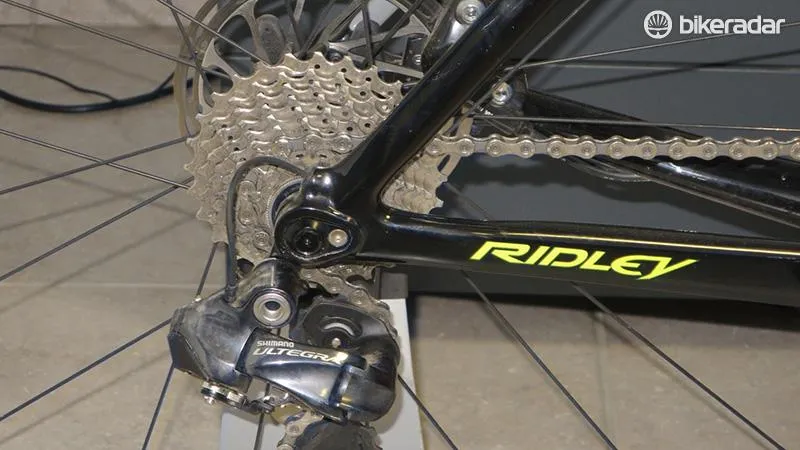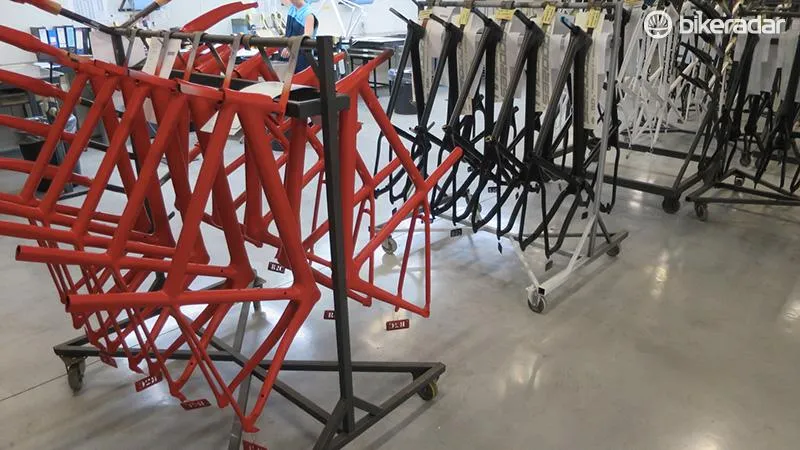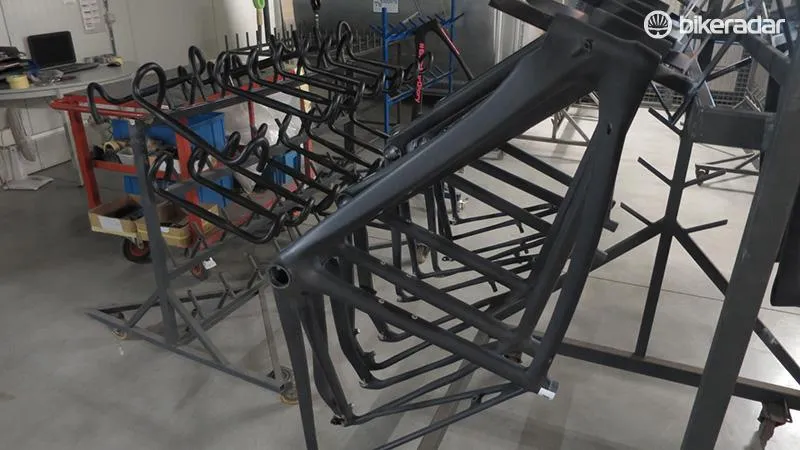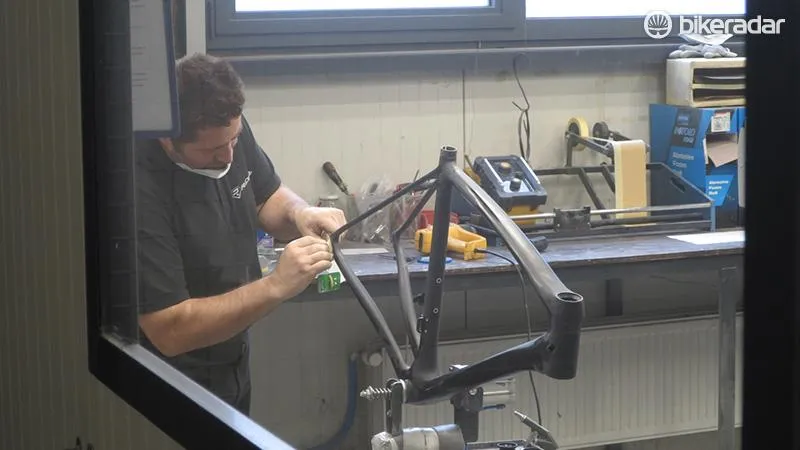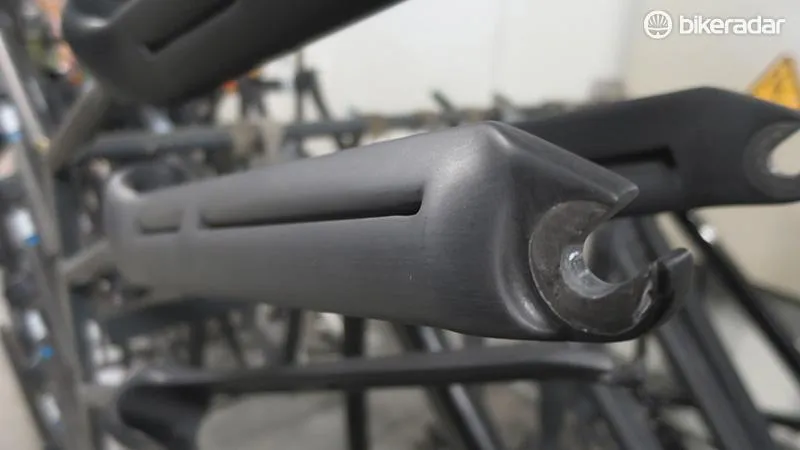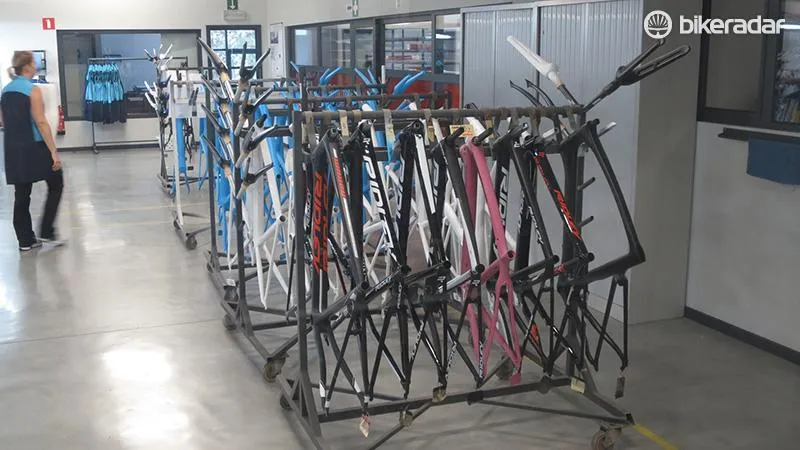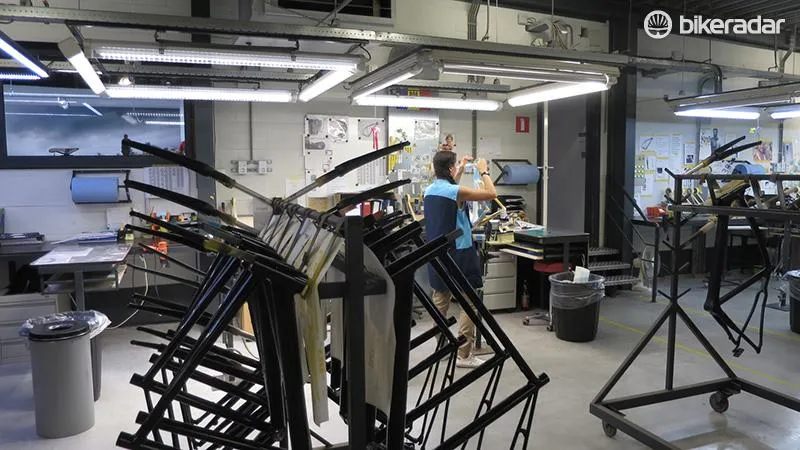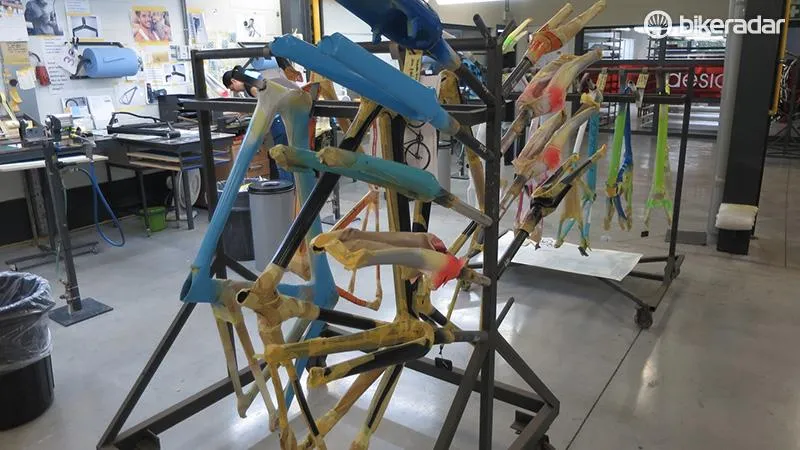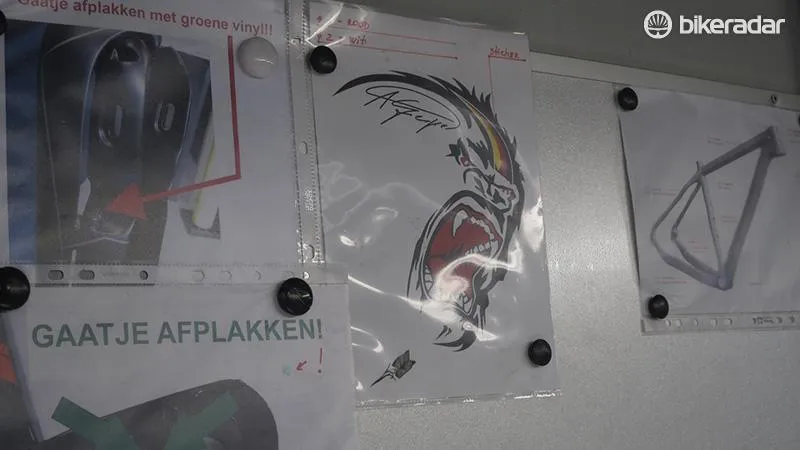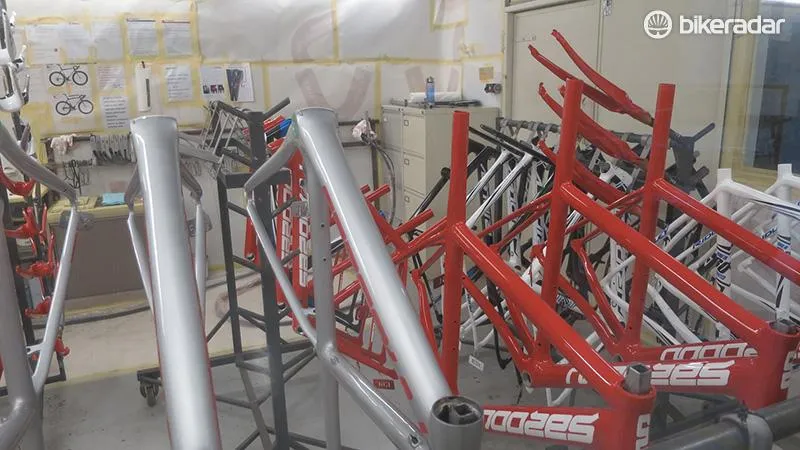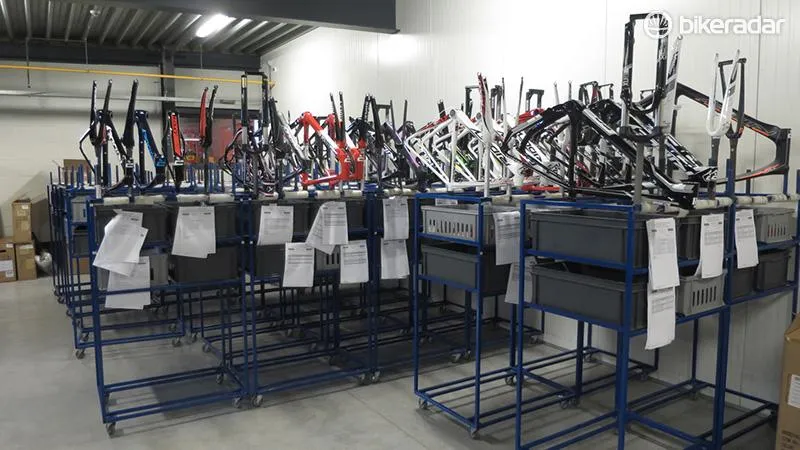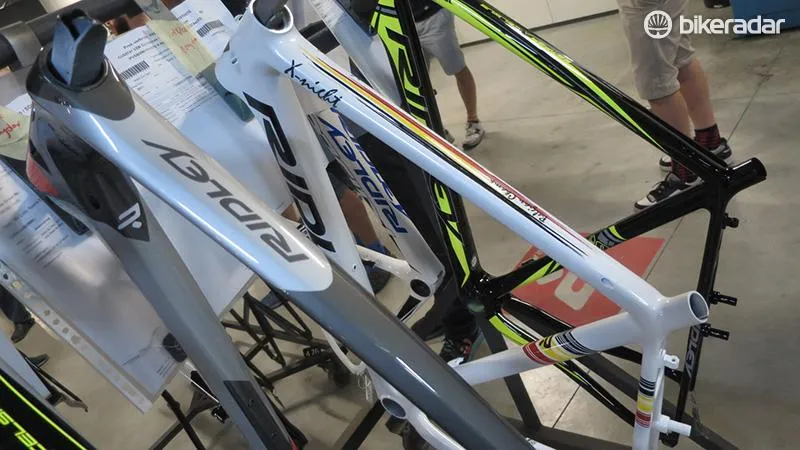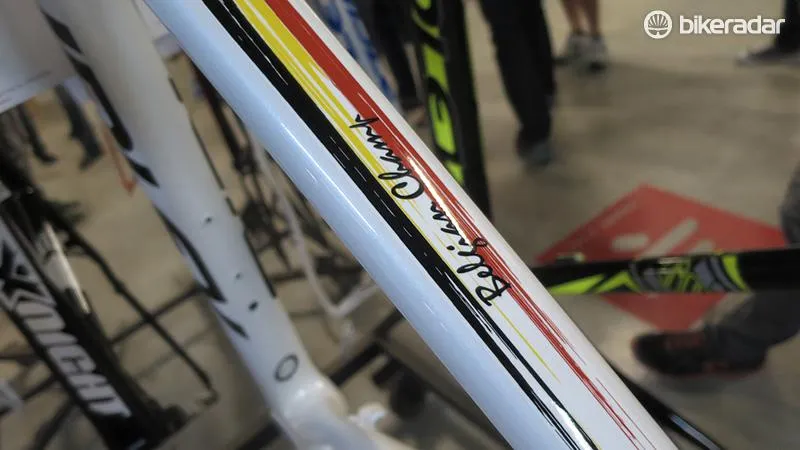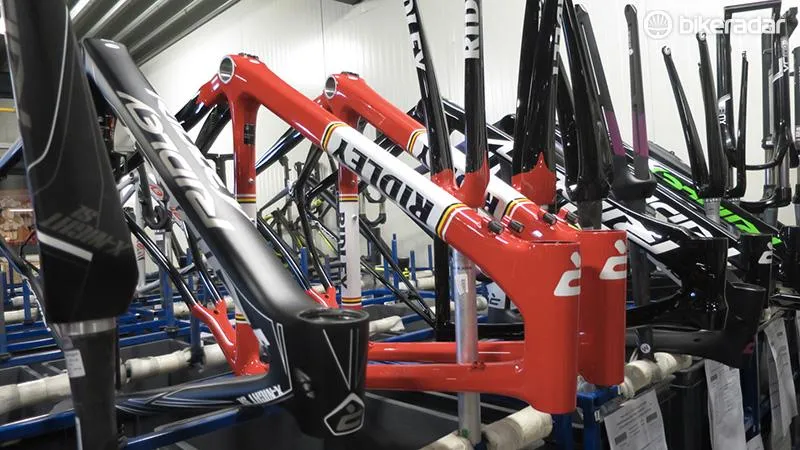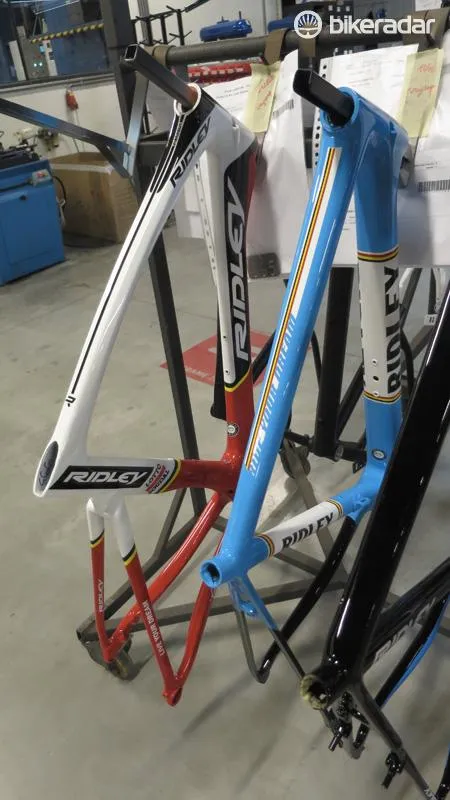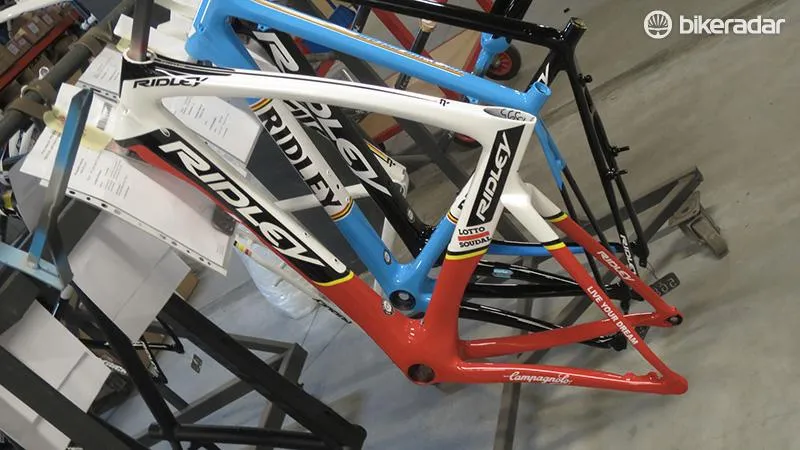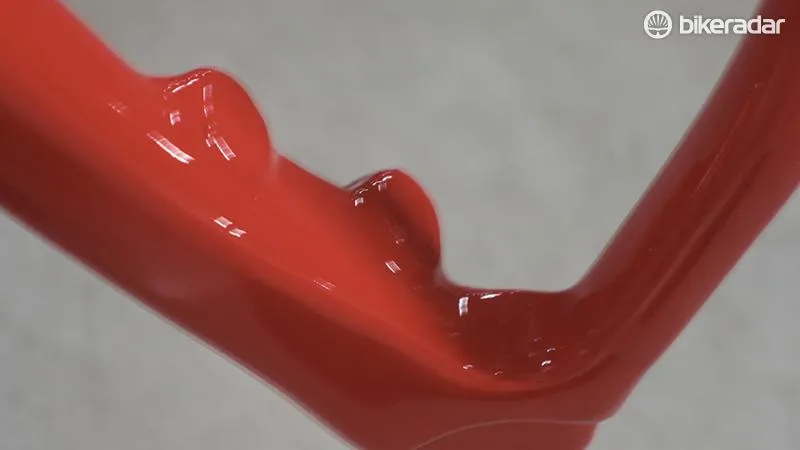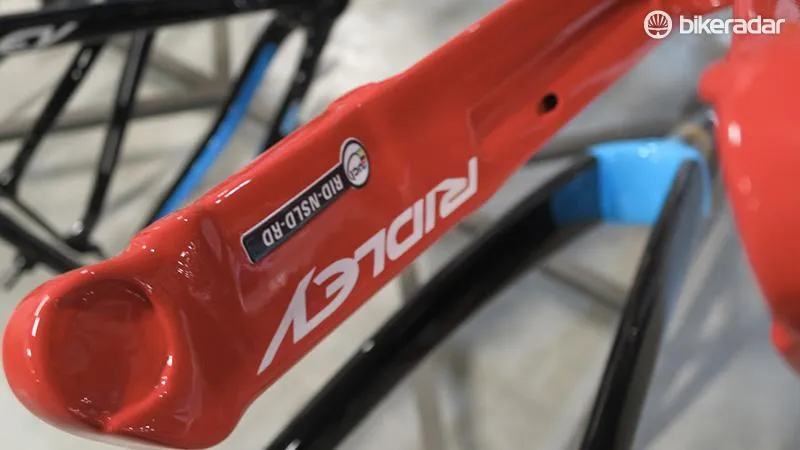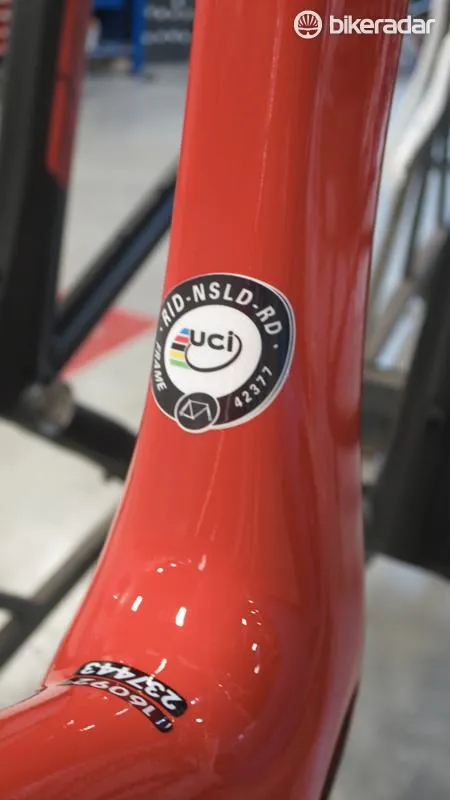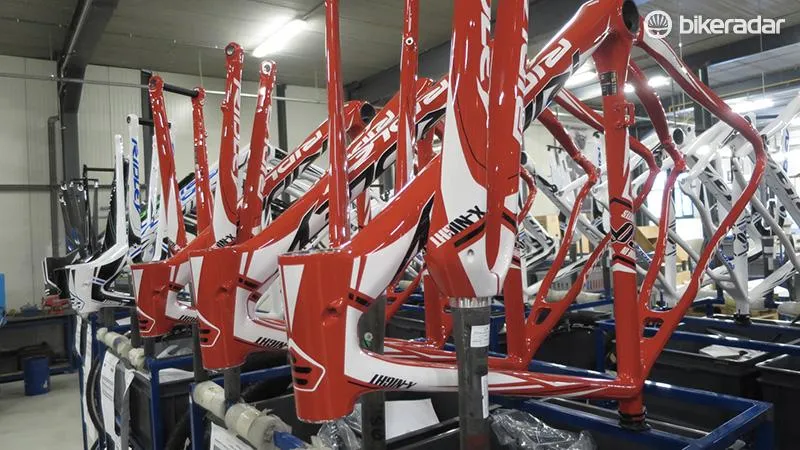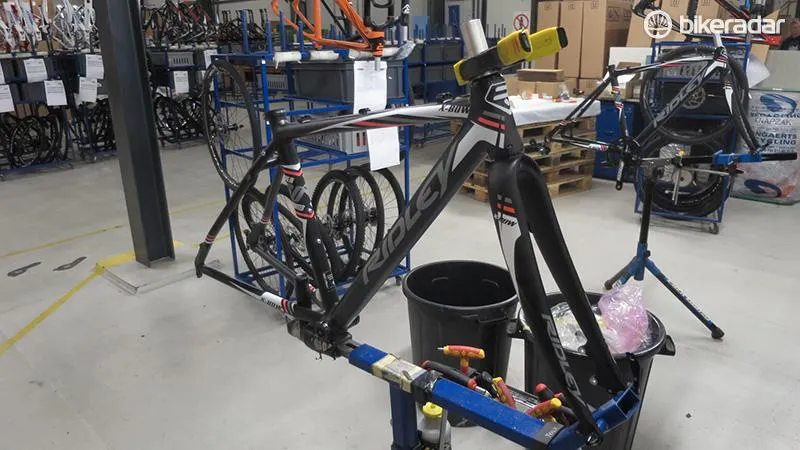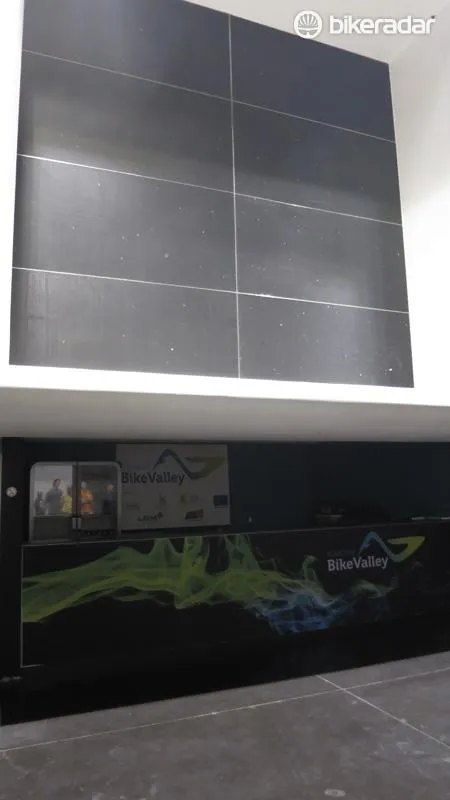Ridley’s goals for its 2017 range were to expand and improve the offering for its women’s bikes along with the introduction of multiple disc platforms and to improve on component specifications across the board and improve value for money.
The line-up has now been announced and Ridley product manager Bert Kenens told us, "We’ve chosen components to improve performance and lower weight at many price points. For example, we’ve switched from Shimano’s RS500 chainset, which is a very good component, to the new 4-arm FSA Gossamer, which is 10 percent lighter, for our mid-level bikes and also because it's designed around press-fit BBs we don’t need an adaptor like we would with Shimano, which also reduces weight."
Ridley’s component partner 4ZA has also introduced a new entry/mid-level wheel, the RC23SL, which effectively replaces the RC31 and is a massive 300g/0.6lb lighter — which should make a decent difference on Ridley’s more affordable models.
The rim shape is all-new too with a wider 18mm internal width and is tubeless ready. The RC23SL is lighter by 20g/0.04lb than the equivalent Fulcrum Racing 7 (1,763g/3.8lb), and 50g/0.1lb lighter than Fulcrum's Racing Sport.
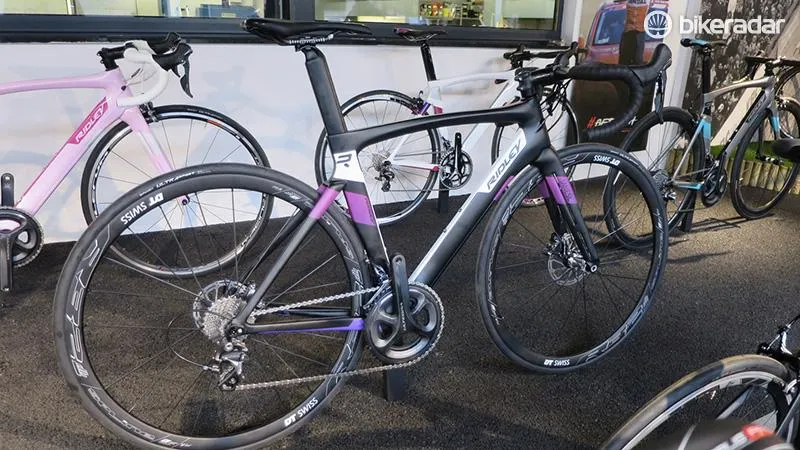
Women’s bikes
Ridley has seen a lot of growth in women’s bike sales and was keenly aware that it needed to expand its offering across the board. This led to the engineering team researching what women need from a specific bike design.
The women’s range is now made up of the Liz SL, Aura SLX, Aura SLA and Jane SL
Kenens explained, "There are some (very) general differences between men and women size wise; women tend to have longer legs (for the same given height) and shorter arms and torso, as a generality, but if you sampled globally that isn’t quite right.
"So that means the need for a specific frame geometry isn’t quite so important as making sure you specify the right components, so that means women’s specific saddles, shorter stems, narrower bars, crank arm length and lighter gear ratios. The lighter ratios are because we’ve found that women tend to spin more than men, who have a tendency to often push a hard gear [rightly or wrongly]. So we’ve combined these ratios along with a zero-offset seatpost to make spinning easier."
The new Ridley Jane SL is the flagship bike in the new women’s range and it’s an out-and-out performance bike (it’s the female equivalent of the Noah SL aero bike). The Jane SL has the same aero-properties as the Noah SL and the geometry matches too, it's just available in much smaller sizes.
The component changes include stems between 80-100mm across the size range, bars between 38/40/42, a wider saddle and crank lengths of 162.5mm and 165mm are offered too.
The women’s range is now made up of the Liz SL (the Fenix SL is the men's equivalent), Aura SLX (men's version is the new Helium SLX), Aura SLA (Helium SL alloy) and Jane SL (Noah SL).
The Liz SL 105 mix is priced at £1,799.99, the Aura SLX starts at £4,299 for the Ultegra and the Aura SLA retails at £1,899 for the Ultegra and £1,499 for the 105 mix. US and Australian pricing still to be confirmed.
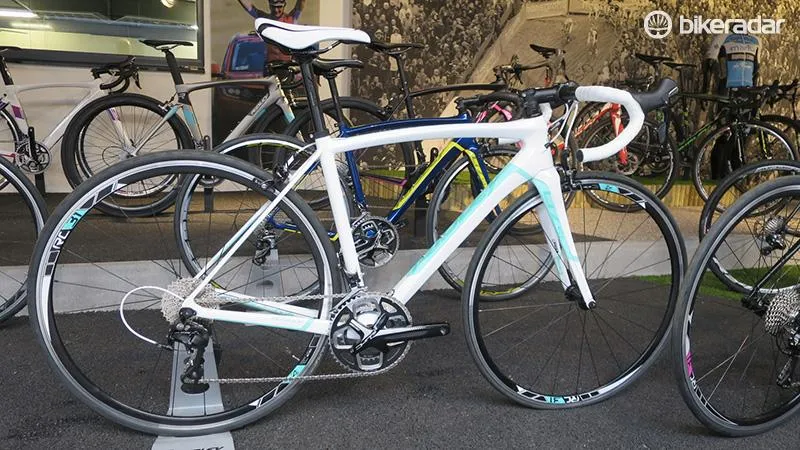
Design changes for 2017
Ridley has in the past come under some criticism for being a bit branding heavy on its frames (they certainly aren’t alone in that), but the success of the retro-flavoured minimalist graphics on the Helium SL, as ridden by the Lotto Soudal team, seems to have given them pause for thought. So for 2017 Ridley has worked with Italian design house Jonny Mole, whose previous clients include Giant, Scott (on clothing) and FSA’s recent restyling too.
The new look is far simpler and cleaner and Kenens said, "We think our frame design should speak for itself, so the logos have become smaller, more subtle and with stripped down features whilst at the same time being a bit bolder with colour options."
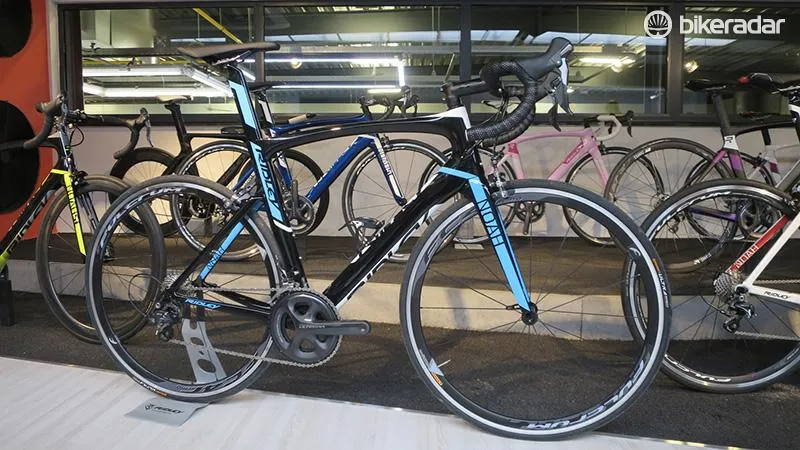
Aero road
Ridley was one of the first European brands to embrace aerodynamics on road bikes (outside of time trialling), going as far back as 2006 with the original Noah — which Robbie McEwen rode when he won the green jersey. There's also the truly innovative Noah Split-Fork aero bike from 2010 (debuting F-Surface aero elements) and the outrageous Noah FAST from 2012 with its integrated carbon-leaf spring braking, F-Surfaces and split-foil fork front and rear.
We don’t make special bikes for our pro riders, they get given bikes from the same stock as we sell
The Noah SL took the lessons learnt from pushing the boundaries on bikes like the FAST to become a slick aero design, but one that’s now significantly lighter and more comfortable — the frame now weighs in at just under a kilo.
It still retains the F-Splitfork design, the principle of which is that the double blades channel air away from the spinning wheel; this creates a vacuum, meaning less resistance, and Ridley claims this design leads to an eight percent drag reduction.
F-Surface is another innovation that continues on the SL, whereas before it was an applied sticker/paint/decal surfacing, the new F-Surface+ is molded into the frame. The claim is that these textured channels create a micro-disruption of airflow that enhances the laminar flow (the textures create a small trip that pushes the air around the tubeshape rather than disconnecting earlier, like it would on a traditional round tube) giving a seven percent reduction in drag.
The fork crown integration into the frame has been designed to bring the airflow closer to the frame as it passes around the frontal area, and the dropped seat stays at the back smooth airflow around the seat tube elements to reduce drag.
The SL has a much simpler look compared to bikes like the FAST, and Ridley says that’s because the main consideration is for a bike that it is easy to work on, easy to replace parts and generally easy maintain. Ridley engineer Bruno De Naeyer says "The traditional position of the rear brake means installation is easy and adjustment is easy, on the fly or by a team mechanic leaning out of a car. We wanted a no-nonsense aero bike that's easy to maintain, service and raceable in all conditions.
"We don’t make special bikes for our pro riders, they get given bikes from the same stock as we sell, which works as André [Greipel] won on the Champs-Élysées this year on the Noah SL."
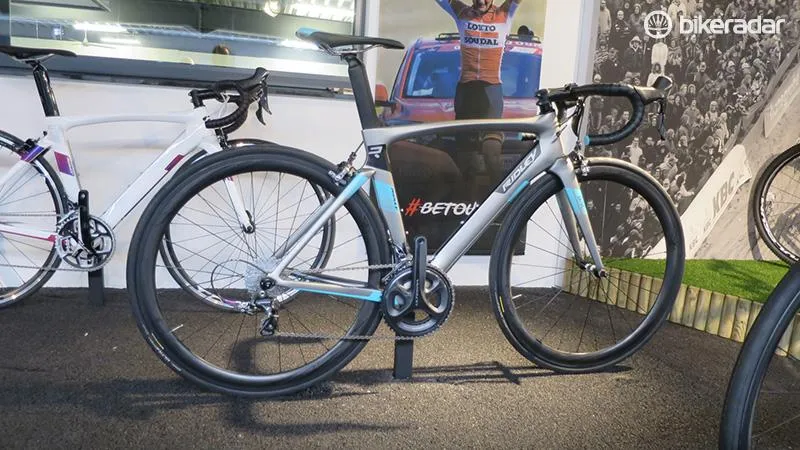
The more affordable Noah and Jane
The SL disc has been spotted plenty before its ‘official’ launch to join the full range for 2017 and we asked De Naeyer why Ridley chose now to design a bike that is so focused on racing yet can’t be raced in UCI sanctioned events.
Another element helping to reduce the price is a change in the fork, it’s still aero but is a non-split fork design
De Naeyer told us that "The UCI testing starts again in September and we think once this period is over it won’t be long before they are cleared to race." And It’s a sentiment we agree with, especially as all of the major launches this year from major brands such as Giant, Cannondale and Merida have all been lightweight-pro-racing-level disc equipped bikes.
The Noah SL disc frame is between 50–100g heavier than the standard SL, and it shares the same wheelbase dimensions — and as you’d expect is equipped with flat-disc mounts and 12mm thru-axles both front and rear.
Alongside the SL, Ridley has also launched standard versions on both the Noah SL and Jane SL, simply called Noah and Jane, with the aim of offering 95 percent of the performance for 80 percent of the price.
The Noah and Jane use the exact same molds as the SL but with differences in the lay-up of the carbon. The SL uses a combination of 40/50/60t carbons — the higher the number the higher the tensile strength, meaning you can make a bike of equal stiffness to lower grades with less material and therefore less weight — whereas the standard bikes add 24/30T carbon into the mix, making for a frame that’s a little heavier and just slightly less stiff.
Another element helping to reduce the price is a change in the fork, it’s still aero but is a non-split fork design.
The Jane SL will retail at £3,399.99 for the Ultegra with Fulcrum Racing 4 Custom wheels and the Noah will start at £3,399.99 for the Ultegra.
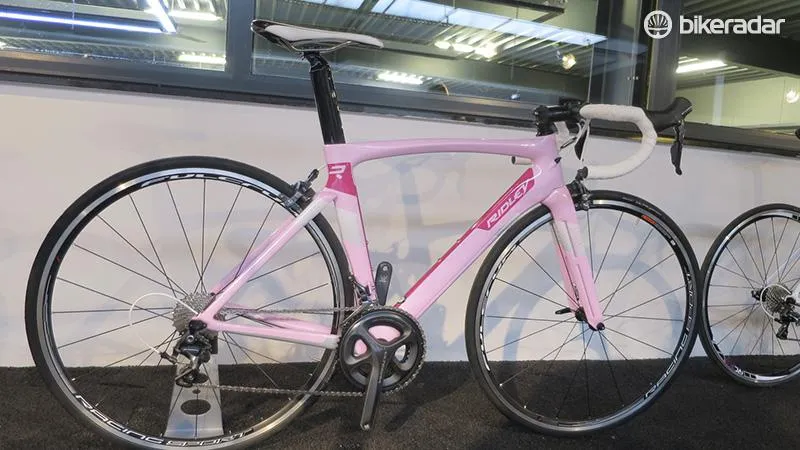
Ridley Helium X and SLX
The standard Helium RS and lightened SL have been tweaked and improved for 2017, and both have been given new names. The base model becomes the X and the (now even lighter) SL becomes the SLX.
In short, we will not take out the last gram if it would compromise the handling of the bike
De Naeyer explained that "the mantra behind the Helium has always been the best stiffness to weight ratio, the best relationship between the two. So you’ll find that we don’t have the lightest or the stiffest, but we believe we’ve found the best compromise between those two characteristics.
“As this is also one of our pro-ready bikes [the SLX], unlike other brands we don’t make special stiffer versions for the pros or make a special super-light version that’s not stiff enough for the pros to ride. We never make special bikes [for pros], they get the same frame from the warehouse as everyone else."
The Helium SLX has, as you’d expect, become lighter and stiffer with the frame now tipping the sales at 750g/1.6lb (M) and has a new fork design that’s 15g/0.03lb lighter at 300g.
The frame also has revised cable routing, it’s now fully internal with molded-in internal channels and has a revised carbon lay-up combined with a revised front-end shape — at the joints between head/down/top tubes which has increased overall stiffness by 15 percent and a new straight bladed fork that provides sharper handling and claimed better cornering.
When we asked about the lightweight race that's seemingly going on between plenty of high-end brands, De Naeyer told us "We had working bikes built below the magical 700g mark, but we decided against putting it into production as the bike needs to be tough enough to last and be ridden in all conditions including our own Belgian cobbles. The SLX is tough enough, though we do specify a rider weight limit of 95kg. In short, we will not take out the last gram if it would compromise the handling of the bike."
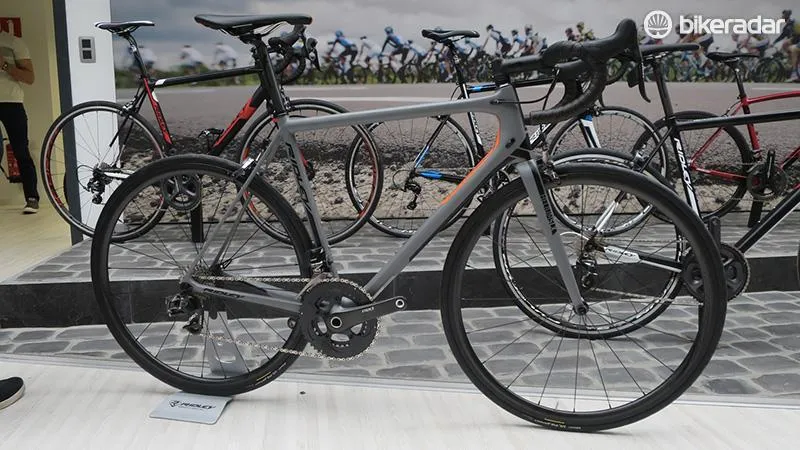
Ridley Helium X/Aura X
The X stands for extra-stiff according to Ridley, the differing lay up to the SLX means that the frame is a little heavier (just under 1kg), the good news is that it’s lined up to be considerably cheaper than the SLX and it does come with the new 300g lightweight fork.
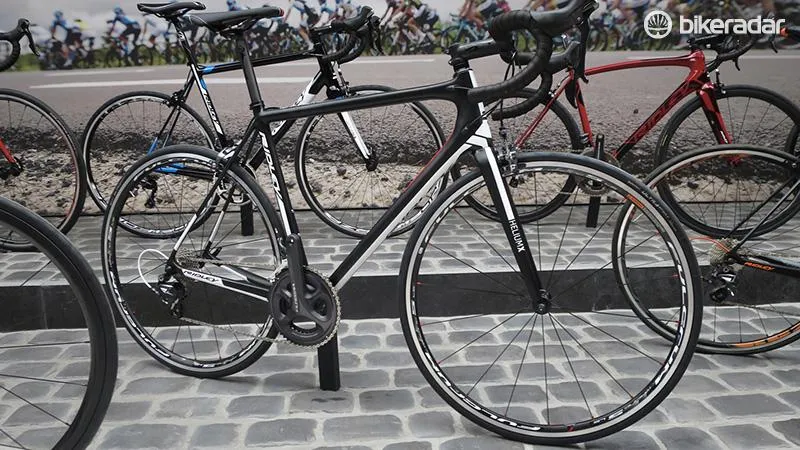
Ridley Helium SLA
The new high-grade alloy SLA frameset is shaped and styled just like the carbon models. The frame itself is sub 1,200g and it gets a full carbon fork.
The frame’s back end has been developed to emulate the stiff chainstays/compliant seat stays of the carbon models, and take one look at the SLA and you’ll see the pencil thin, slightly flattened shaping of the seat stays as a standout feature.
The full carbon fork is a bit more substantial looking than the SLX’s as it should be because the SLA’s fork comes straight from the cobble conquering Fenix SL. The bottom bracket shell is compatible with the threaded BSA standard so expect to see the SLA at some seriously competitive price brackets.
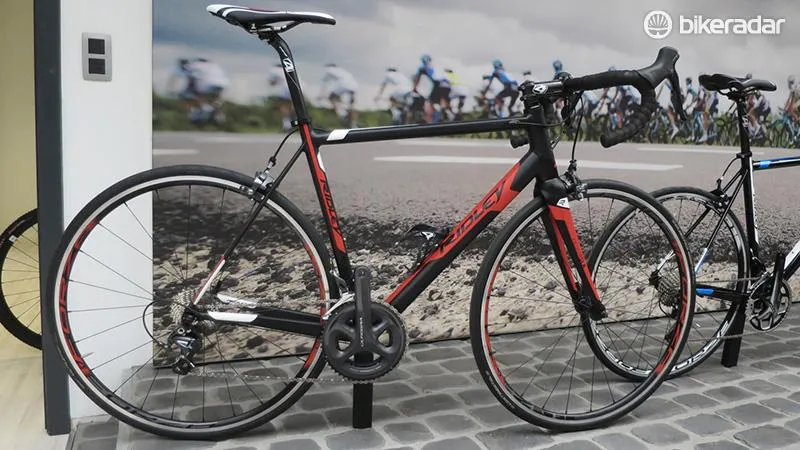
Ridley Fenix SL and SL Disc
Being a Belgian brand it’s no surprise that Ridley has always made bikes for the cobbles, starting with the legendary Damocles.
The front triangle remains unchanged however, and obviously there’s a new thru-axle fork too
In 2012 they launched the original Fenix and last year it was the SL variant, which was developed with plenty of feedback from the Lotto team. They wanted the Fenix to be a little lighter (no surprise there) and offer much more tyre clearance to take a 28 or 30mm tubular on wider rims for Flanders and Roubaix.
It’s somewhat of a surprise to learn that none other than the Gorilla himself, André Griepel, prefers the Fenix SL to all the other bikes in the Ridley range. “Yes he rides the Noah SL when he needs the aero advantage, but for training, long rides, and general use he always chooses the Fenix SL, not forgetting that he won the 15th stage of the tour on the Fenix SL in 2015”, Bruno tells us.
The Fenix is defined by its slightly longer seat stays, to allow for comfort giving flex, though Bruno is quick to point out that the big 28c tyres that can be fitted are the easiest way to add comfort.
Up front the Fenix integrates its fork into the head tube to add a bit of Noah-style aero, whilst the main tubes have an almost diamond shape profile — the ‘corners’ of the diamond shape are actually ribs that add reinforcement from within.
The back end is Helium styled — super skinny seat stays matched to stiff chainstays — and the Fenix was designed around Press-Fit BB86 to allow for wider tyre clearance without effecting drivetrain alignment. Again the Fenix SL frame and fork are the exact same ones the Pro’s ride, so if you chose say the £1,799 105 equipped model you’d be on the same frameset as the Gorilla.
The new SL Disc will be available in February, and the frame has been tweaked over the calliper model. The back end now has the seat stays lowered that are designed to add more flex to counter the additional material and stiffness that result from incorporating both a thru-axle and a flat disc mount.
The front triangle remains unchanged however, and obviously there’s a new thru-axle fork too. Ridley says that under testing, the new Disc showed the exact same comfort levels as the standard SL. The SL Disc joins the existing Fenix Disc in the range, although the existing Fenix Disc does get a significant price reduction.
The Fenix SL is priced at £1,799.99 for the 105 mix, £3,349.99 for the DuraAce DB and £4,999.99 for the SRAM Red eTap DB. US and Australian pricing is still to be confirmed.
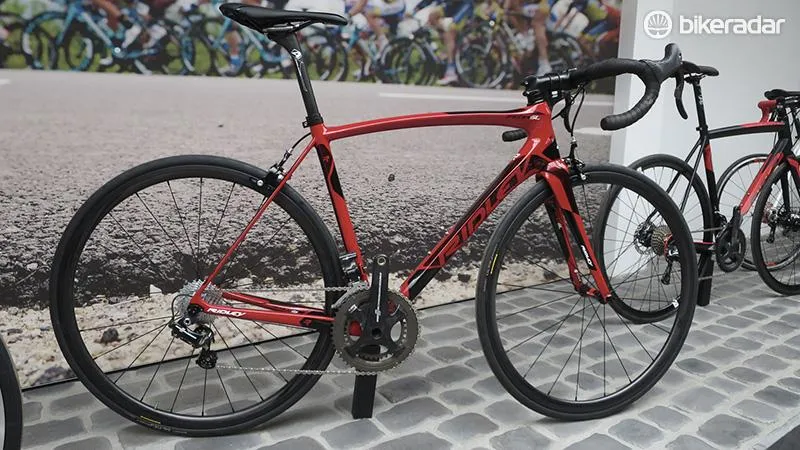
Ridley Fenix SLA and Liz SL
The alloy version of the Fenix shares the diamond shaping of the carbon models, and also gets a slender 27.2 diameter post for added comfort. Ridley sees the SLA as an entry into Ridley ownership and they are offering it in a huge range of sizes from XXXS to XL (XXXS is smaller than a 40cm).
It’s good to see that Ridley is offering the women’s specific Liz SL model with the same wide sizing too.
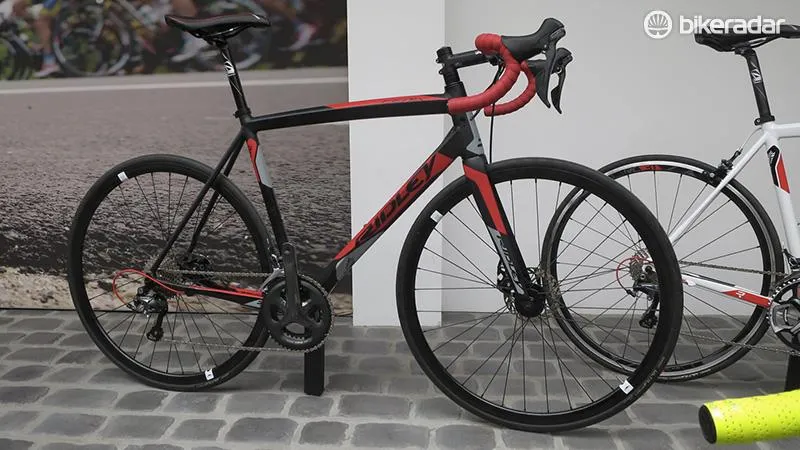
Ridley X-Trail
Not much has changed in the recently introduced X-Trail range. The X-Trail Alloy and Carbon are both still aimed at being all-rounders, as Ridley says, they are “Perfect for winter riding, commuting, cross, or gravel riding.”
The one significant change is a modified fork, which switches to the just about accepted industry road standard 12mm thru-axle over the previous year’s 15mm
The X-Trail geometry is optimised for its all-round aims, it’s a little taller and longer than a cross bike with a slacker seat angle, a more sloping shape for more top tube clearance and has a slacker head angle combined with less BB drop. In Ridley terms the X-Trails are closer in geometry to the Fenix SL than the X-Night CX machines.
It even shares a similar integrated aero style fork crown/head tube junction along with a slightly curved top tube like the Fenix, and a slender 27.2 seat post too.
The one significant change is a modified fork, which switches to the just about accepted industry road standard 12mm thru-axle over the previous year’s 15mm. The X-Trail alloy shares the same shaping as the carbon, has the same 36mm wide tyre clearance and moves to a 12mm thru-axle up front — although the rear stays as a standard QR.
The BB shell, like the Helium SLA, is a threaded BSA unit and Ridley promises a fender option for the alloy frame to match the one already offered on the carbon models.
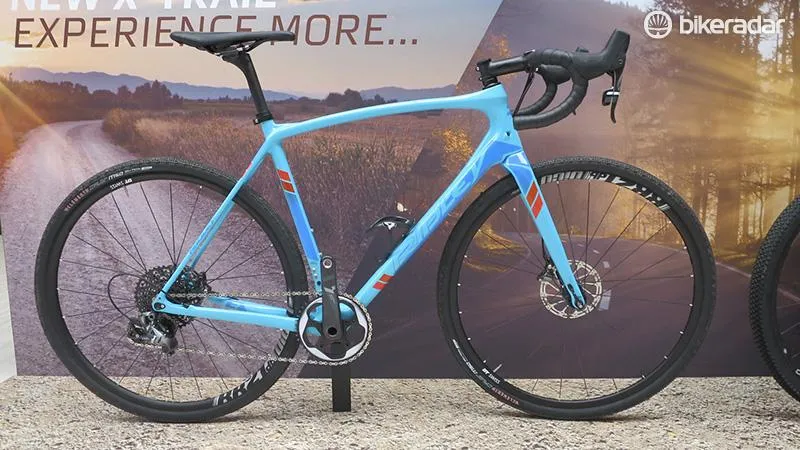
Ridley Dean
Ridley has introduced a lower-price pointed TT machine to sit below the (expensive) Dean Fast superbike. The new Dean has a more relaxed geometry than the FAST and is aimed a little more at the triathlon market rather than out and out TT market, and they’ve concentrated on a bit more practicality too.
The Dean gets standard brakes, a less integrated cockpit (so it can be removed more easily, good for when your travelling abroad with your bike) and it still has plenty of interesting tech for the lower price point — not least of which is the aero F-Surface detailing and an adaptable ride position thanks to the massive range of adjustment from the seat mast.
Ridley X-Night
Ridley has shaved 250g from the overall frame weight of the X-Night SL Disc thanks to a switch to flat mounts. This though is very much an interim model with Ridley confirming that a new X-Night is coming with 12/12 thru-axles and a significantly lighter frame. They haven’t yet made a decision on whether the still popular cantilever version will continue into the new model.
On alloy ‘cross the X-Ride shares the same race-specific geometry as the X-Night, whilst the X-Bow is a little more relaxed and comes with plenty of frame fixtures for racks, bottles, and guards.
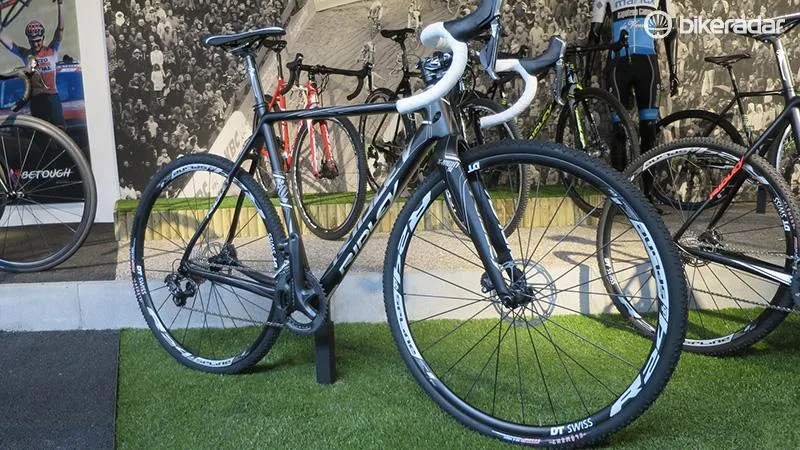
Ridley Bike Valley
Though not part of Ridley’s production facility, the recently opened Bike Valley, which is just a stone’s throw away from Ridley’s HQ, will have a major impact on Ridley’s ongoing bike design. Bike Valley is a non-profit organisation that includes 67 members including Ridley, Lazer helmets, Bio Racer clothing, Flanders Make and Voxdale (specialists in aero and fluid dynamics).
Alongside the wind tunnel that is housed inside there are meeting spaces, a restaurant, a bar as well as spaces available for rent at a low cost to tech driven start ups.
Among the research and testing taking place are aerodynamics, new materials, hydrophobic DIY smart coatings, sensors, 3D printing and composite braiding technologies, and all are aimed at bringing back manufacturing to mainland Europe. Marc Hufkens, co-founder and managing director tells us “It’s an economic dating agency, bringing technical innovation and manufacturing together.”
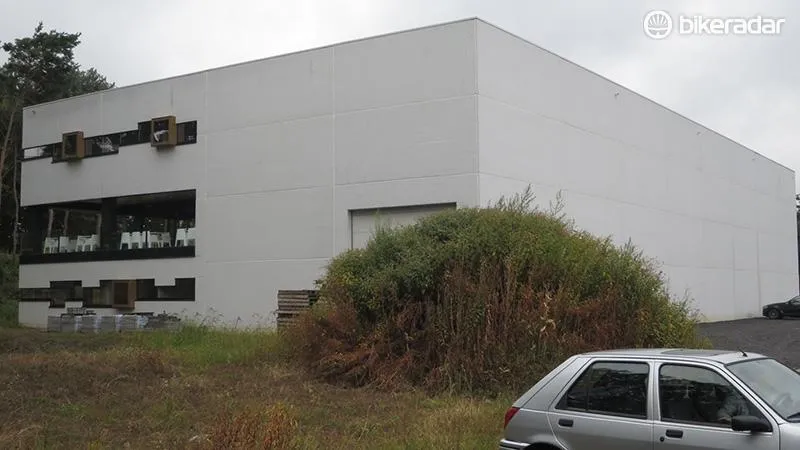
The key part of Bike Valley is its new state of the art wind tunnel, which has been built specifically for bikes. The quad turbine driven tunnel is 40 metres long and has a terminal speed of 108kph. Bike Valley says that the tunnel is designed to measure accurately at 30/40/50/50/70kph, which have the most benefit to cycling.
With brands like Lazer, Ridley and Bio Racer all involved in the initial investment it wouldn’t surprise us if they kept the R&D advantage of such a facility to themselves
The humidity controlled tunnel has already piqued the interest of BMC, who have already paid a visit, and it already has Chris Froome’s name on the booking sheets for this September.
The wind tunnel can also measure micro-aero data using a high powered laser (PVL) — using oil particles instead of traditional smoke. The laser is dangerous so during testing a posable dummy was used, generated by a 3D laser scan of Tony Martin. The dummy was then created using 3D milling (like the opposite of 3D printing), and a second dummy is currently being constructed with Tom Dumoulin as the subject.
This allows the team to measure down to 0.5 of a newton, and current research is in intelligent wear that can monitor your ride position alerting you to keep riding in the most aero position possible. Think of it as the next step on from Lazer’s inclination sensor, which alerts you when you haven’t got your aero TT helmet in the optimal position.
With brands like Lazer, Ridley and Bio Racer all involved in the initial investment it wouldn’t surprise us if they kept the R&D advantage of such a facility to themselves, but Hufkens told us “We aren’t exclusive to any brand, anyone is free to use our facilities”.
We don’t know what the future holds for the facility, but we’re intrigued to see what the likes of Ridley, Bio Racer and Lazer will come up with next with a resource like this on their doorstep.
